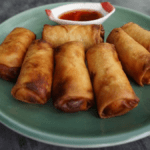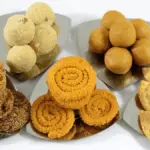Easy Kalakand recipe is a very famous dish in India. People love to have this dish during festive events like Diwali Holi, which promises creamy perfection in every bite. Follow our easy steps to create this Indian sweet at home. Kalakand is the sweetest treat for all occasions in India!
Kalakand, a delicious Indian sweet made from condensed milk.
Ingredients Easy Kalakand Recipe
- 2 cups of condensed milk
- 1 cup of paneer (cottage cheese), crumbled
- 1/2 teaspoon of cardamom powder
- A pinch of saffron strands (optional)
- 1 tablespoon of ghee (clarified butter)
- Chopped nuts (like almonds or pistachios) for garnishing
Instructions
1/ Start by greasing a plate or tray with ghee and keep it aside.
2/ In a heavy-bottomed pan or non-stick pan, add the condensed milk and crumbled paneer. Mix them well together.
3/ Place the pan on low heat and cook this mixture. Stir continuously to prevent it from sticking to the bottom.
4/ As you cook, the mixture will start to thicken. This process may take around 15-20 minutes. Keep stirring to ensure it doesn’t burn.
5/ When the mixture thickens and starts leaving the sides of the pan, add the cardamom powder and saffron strands. Mix them in.
6/ Continue cooking for another 2-3 minutes until the mixture becomes more solid and leaves the sides of the pan.
7/ Now, transfer the mixture to the greased plate or tray. Use a spatula to spread it evenly and flatten the surface.
8/ Garnish with chopped nuts and gently press them into the Kalakand.
9/ Let it cool down to room temperature. You can also refrigerate it for a few hours to set completely.
10/ Once it has cooled and set, cut it into square or diamond-shaped pieces.
Your homemade Kalakand is ready to be served.
Note: You can adjust the sweetness by adding more or less condensed milk according to your preference. Saffron strands are optional but add a beautiful color and flavor.
Tips and Tricks To Ensure Success When Making Kalakand
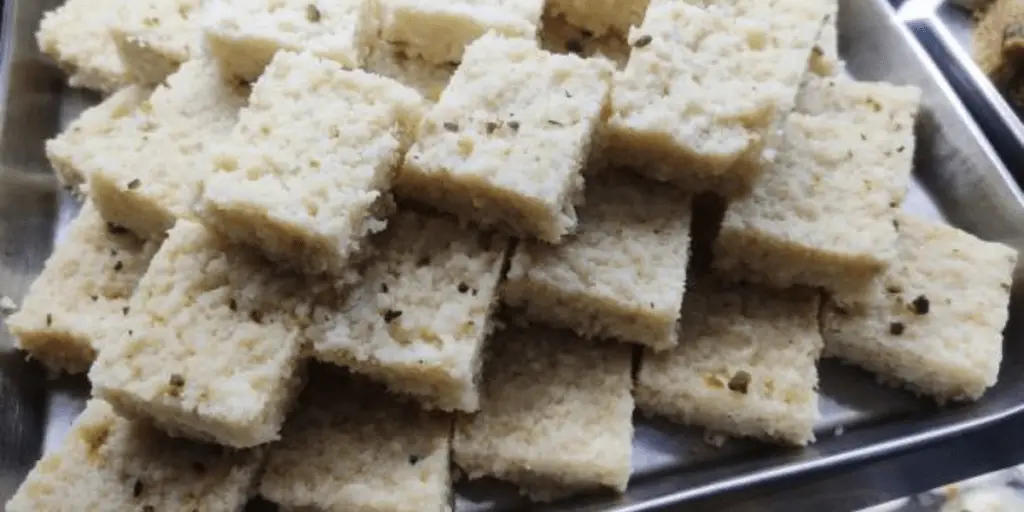
Quality of Ingredients: Use fresh and good quality ingredients, especially condensed milk and paneer. Fresh paneer will yield a better texture.
Paneer Preparation: Ensure that the paneer is crumbled finely to avoid any lumps in the final step.
Low Heat: Cook the mixture on low heat and stir continuously to prevent it from burning.
Non-Stick Pan: Using a non-stick pan will make it easier to prevent sticking and burning. If you’re using a regular pan, make sure it’s a heavy-bottomed one.
Consistency: The Kalakand mixture should be thick and leave the sides of the pan. It will thicken further as it cools down.
Flavorings: Feel free to customize the flavor with a pinch of cardamom powder, saffron strands, or a drop of rose water for a unique taste.
Greasing the Tray: Ensure the tray or plate where you set the Kalakand is well-greased to avoid sticking.
Garnish: Decorate the Kalakand with chopped nuts or even edible rose petals for an attractive presentation.
Cooling: Allow the Kalakand to cool at room temperature before refrigerating it to set completely.
Cutting: For neat and clean slices, use a sharp knife dipped in hot water to cut the Kalakand. This prevents it from sticking to the knife.
Storage: Store your Kalakand in an airtight container in the refrigerator for a longer shelf life.
Common Mistakes to Avoid When Making Kalakand
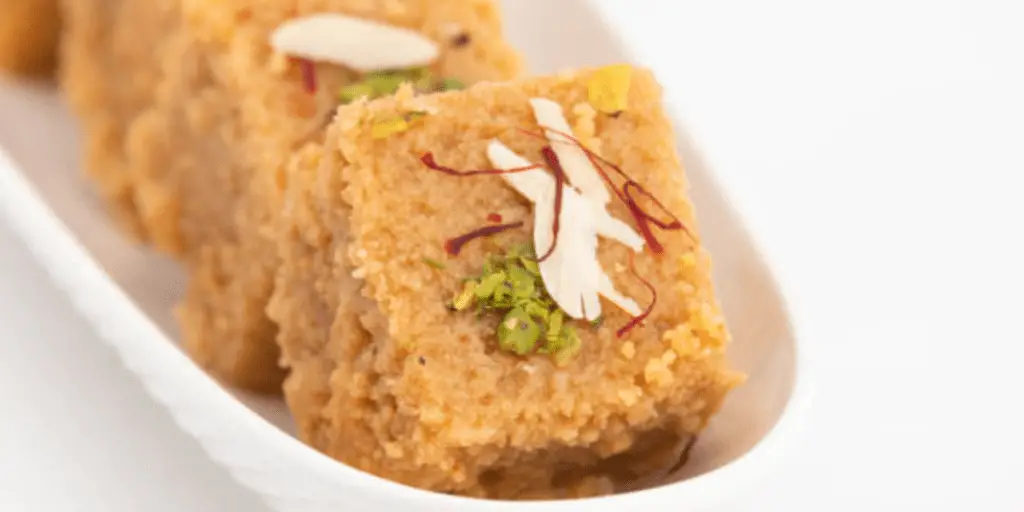
Using Stale Ingredients: Using expired or stale condensed milk or paneer can result in a less flavorful and textured Kalakand. Ensure your ingredients are fresh.
High Heat: Cooking the mixture on high heat can lead to scorching or burning. Always maintain a low to medium heat and stir continuously.
Not Stirring Continuously: Failing to stir the mixture constantly can result in it sticking to the bottom of the pan and forming lumps.
Not Crumbling Paneer Properly: If you don’t crumble the paneer finely, you may end up with lumps in your Kalakand.
Adding Too Much Cardamom: While cardamom adds flavor, using too much can overpower the sweet taste of Kalakand. A pinch or two is usually sufficient.
Skipping Greasing: Forgetting to grease the plate or tray can make it difficult to remove the Kalakand after it sets.
Overcooking: Cooking the mixture for too long can result in a dry and crumbly texture. Once it thickens and leaves the sides of the pan, it’s ready.
Undercooking: On the other hand, undercooking will result in a runny and gooey Kalakand. It should be firm when set.
Not Allowing It to Cool: Cutting or serving the Kalakand while it’s still warm can lead to a messy, unstructured appearance. Let it cool and set properly.
Improper Cutting: Using a dull knife or not heating it in hot water can result in uneven and messy slices.
Storing at Room Temperature: Kalakand should be stored in the refrigerator to maintain its freshness and texture. Leaving it at room temperature can lead to spoilage.
Nutrition Facts
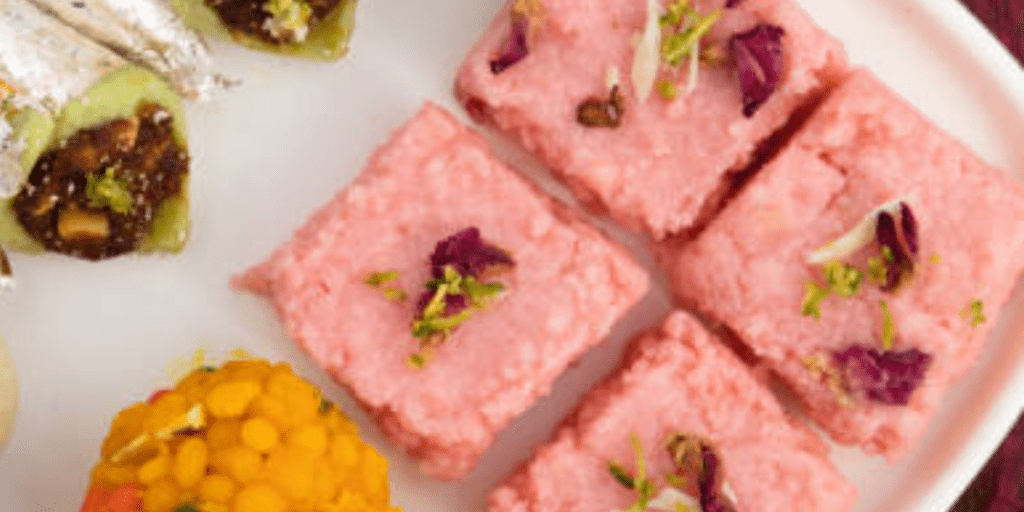
Here’s a general approximation for a standard serving of Kalakand (about 1 piece or 50 grams):
- Calories: Approximately 150-200 calories
- Protein: Around 4-6 grams
- Fat: About 8-10 grams
- Carbohydrates: Approximately 15-20 grams
- Sugar: Varies depending on the sweetness level and ingredients, but it can be relatively high due to condensed milk
- Calcium: Kalakand is a source of calcium, primarily from the paneer (cottage cheese) used in the recipe
- Other nutrients: Kalakand may also provide small amounts of vitamins and minerals, such as vitamin A, vitamin D, and phosphorus, primarily from the dairy products used.
It’s important to note that the nutritional values can vary based on the specific brands of ingredients and the exact recipe you follow. If you have specific dietary concerns or requirements, it’s a good idea to calculate the exact nutrition facts based on the ingredients you use.

